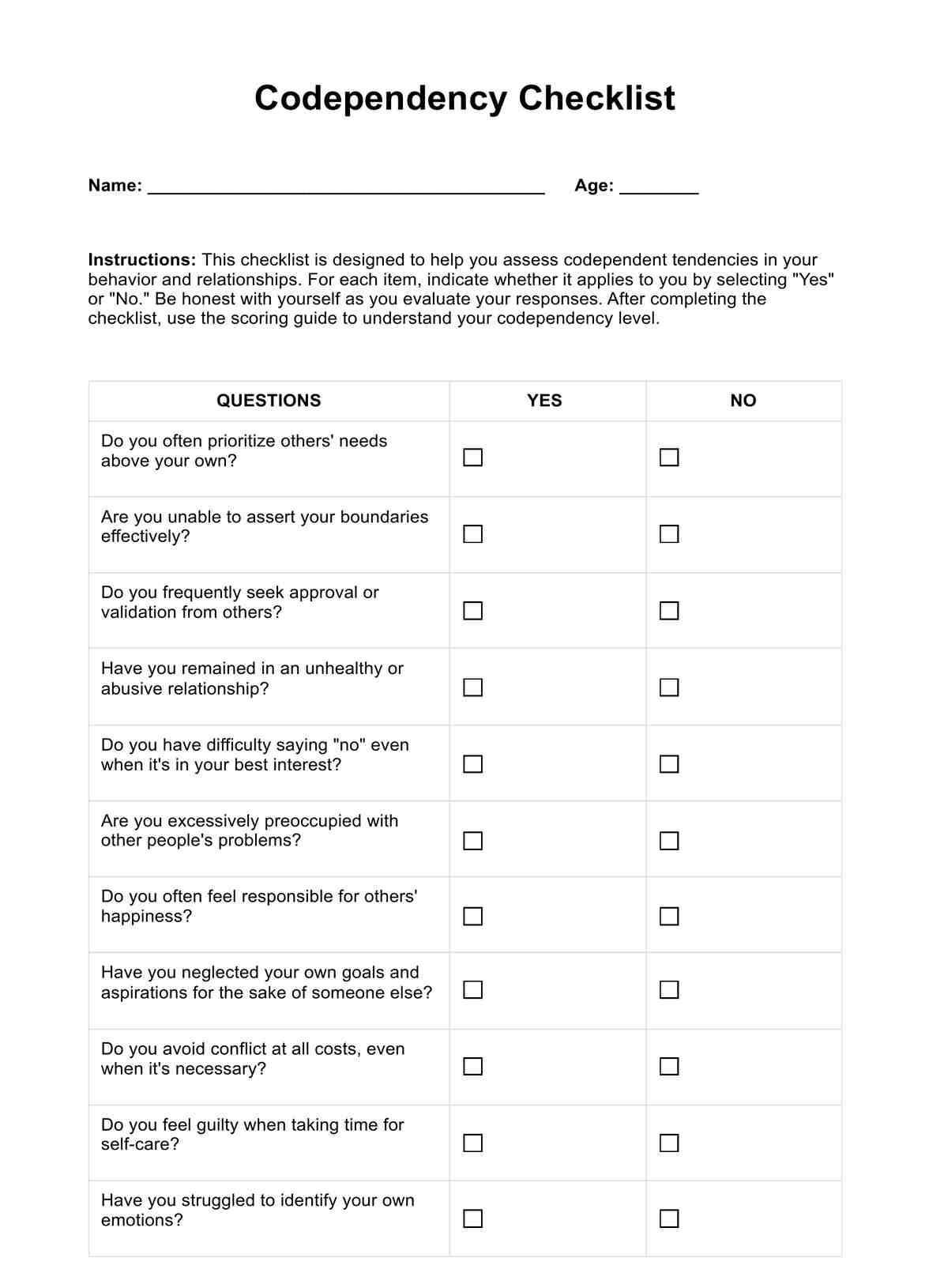Codependency checklists are commonly used by individuals who suspect they may exhibit codependent behaviors or are in codependent relationships. Therapists and counselors may also use these checklists as part of their assessment process when working with clients.

Codependency Checklists
Unlock insights into relational habits with our Codependency Checklist PDF. Identify patterns & empower personal growth for healthier relationships.
Codependency Checklists Template
Commonly asked questions
Codependency checklists serve diverse purposes: aiding individuals in self-assessment, assisting therapists in diagnosis during therapy sessions, acting as discussion tools in support groups, and enabling troubled couples or individuals to identify codependent patterns within their relationships. They are versatile tools for self-awareness, therapy, group discussions, and relationship evaluation.
To use a codependency checklist, individuals answer questions honestly, typically with "Yes" or "No" responses. After completing the checklist, they count the "Yes" responses to gauge the extent of codependent tendencies.
EHR and practice management software
Get started for free
*No credit card required
Free
$0/usd
Unlimited clients
Telehealth
1GB of storage
Client portal text
Automated billing and online payments











